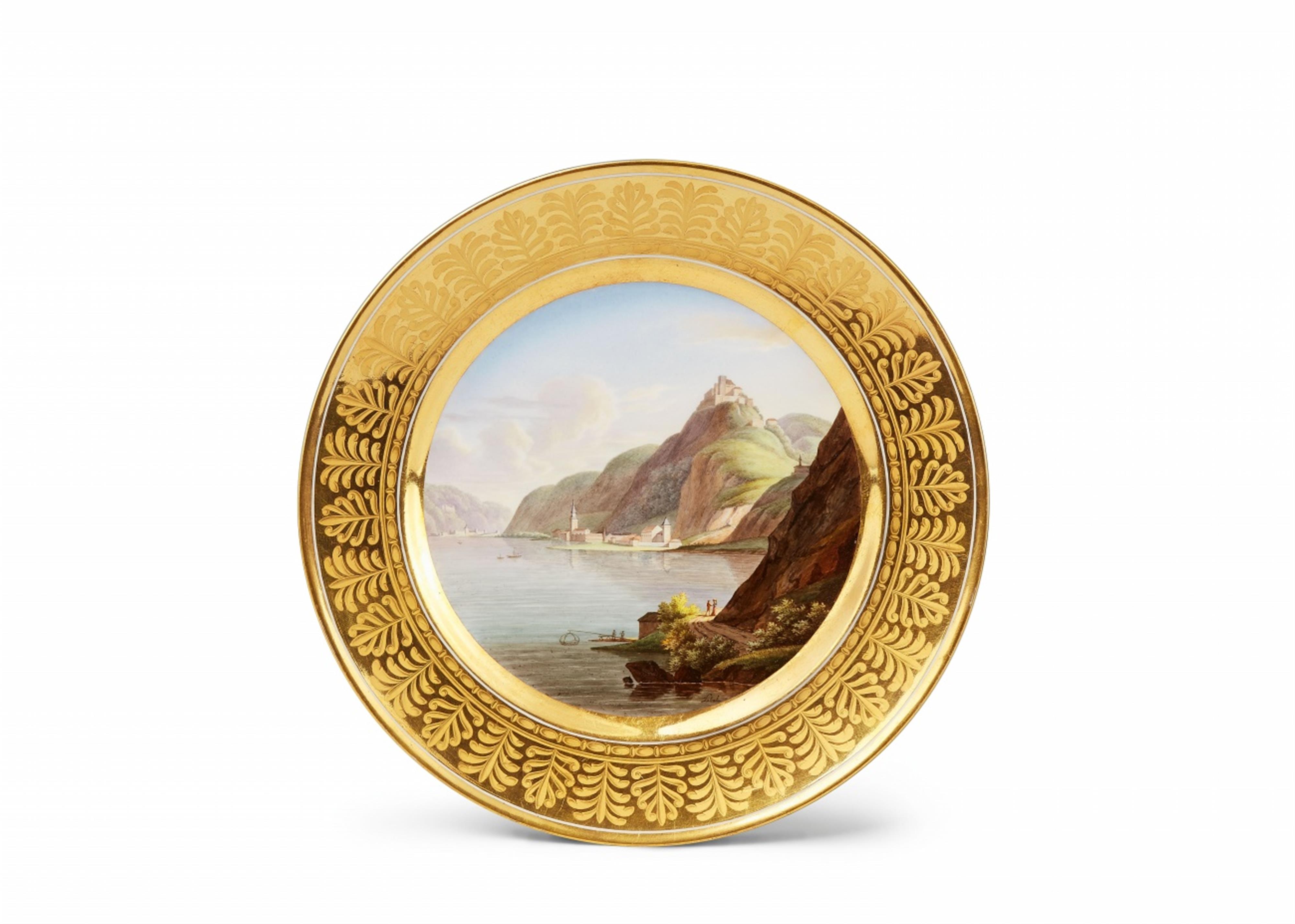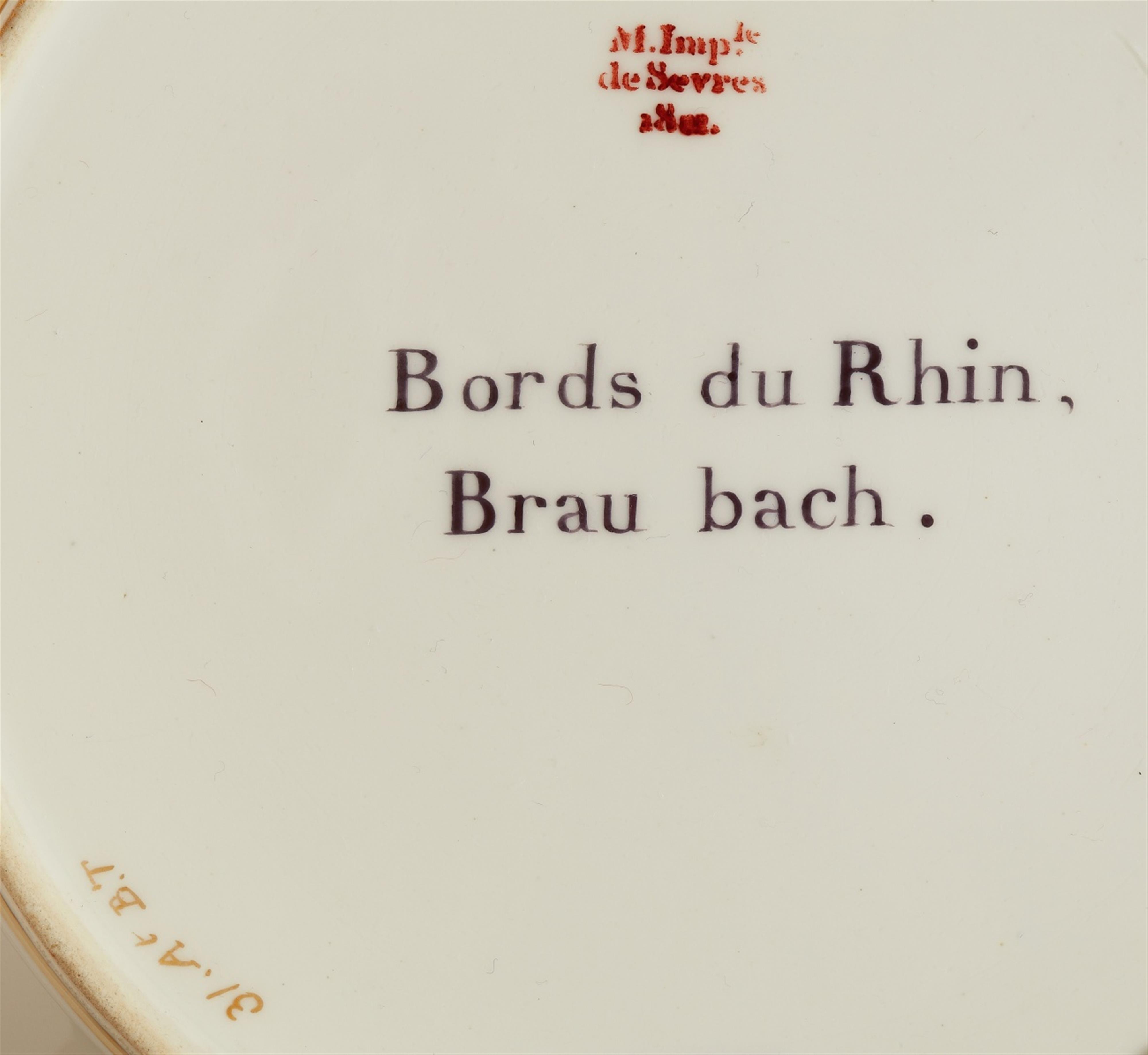A Sèvres porcelain plate from the Marly d´or service
"Assiette plate" model. Painted with a panorama labelled "Bords du Rhin, Brau bach." with a beaded border and burnished gold palmettes. Signed below "Lebel." Red stamped mark M.Imp.le de Sevres 1811, gilt 31.A.t B.T, incised DL and Lo. D 23.5 cm.
1811, painted by Nicolas- Antoine Lebel.
The "Marly d'or" service was begun in 1805 and produced until the Restoration of the Monarchy in 1814. Like KPM's wedding services for the daughters of Frederick William III, the plates in this service were also decorated with differing motifs for the various courses, including genre scenes, mythological subjects, allegories, birds, and landscapes. The borders are etched with the same décor throughout, a typical trait of Sèvres services during this era. In 1809, Napoleon presented several pieces from this service to King Frederick August I of Saxony, which are still housed in the Porcelain Collection in Dresden to this day. Prince Schwarzenberg, the Austrian ambassador, also received several plates from the service in 1812. It's possible this plate is from the last delivery.
Provenance
Lower Saxon private collection.
Literature
There were several painters in the manufactory named Lebel or LeBel (s. Savill, The Wallace Collection Catalogue of Sèvres Porcelain, vol. III., p. 1041 f). Jean-Nicolas worked there from 1765 – 1793 before being dismissed due to his Royalist sentiments. In 1816 he tried to reapply for a job as a painter at Sèvres after the Restoration. His father Jean-Estienne LeBel cannot be considered as a painter due to his age. Thus, the plate can logically only have been painted by Nicolas-Antoine Lebel, who is listed as a cameo and landscape painter from 1804 – 1845. He was also the artist responsible for the Cambacérès service, one of the many gifts presented by Napoleon at the wedding of his niece and adoptive daughter Stéphanie de Beauharnais with Hereditary Prince Karl von Baden in 1806. In this case it was intended for his Chancellor Jean-Jacques Régis de Cambacérès.




